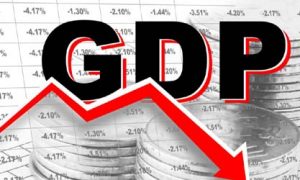 By Nageshwar Patnaik in Bhubaneswar, September 10, 2021: India has been slowly but steadily recovering from the COVID-19 pandemic shock. It is all set to post strong economic growth in the coming quarters, notwithstanding inflation due to rise in food prices. However, economic recovery remains uneven as indicators such as air traffic, port traffic, Purchasing Managers’ Index (PMI), and services show a lagged revival from the impact of the second wave. But the moot question is how to sustain even this recovery rate over the rest of the year and beyond.
By Nageshwar Patnaik in Bhubaneswar, September 10, 2021: India has been slowly but steadily recovering from the COVID-19 pandemic shock. It is all set to post strong economic growth in the coming quarters, notwithstanding inflation due to rise in food prices. However, economic recovery remains uneven as indicators such as air traffic, port traffic, Purchasing Managers’ Index (PMI), and services show a lagged revival from the impact of the second wave. But the moot question is how to sustain even this recovery rate over the rest of the year and beyond.
Fortunately, the impact of the pandemic on economic activity was not as severe as the first wave last year which has helped India’s ratings but the fresh downturn left economic activity at 17% below pre-Covid levels, according to S&P Global Ratings analysts.
India’s economy expanded 20.1% year-on-year in the April-June quarter on a low base though sequentially it was down 16.9% over the previous quarter, according to data released last month. However, the Indian economy is still far from normal, but activity is gradually improving, Record foreign exchange reserves and the country emerging as an external creditor to the world has also supported the rating and stable outlook, S&P said on Wednesday.
Nevertheless, the pandemic led to massive unemployment last year resulting in sharp decline in income of varied strata of the society. This has once again pushed the percentage of the Indians living below the poverty line. A report of the United Nations Development Programme (UNDP) has shown that about 260 million people will be back in absolute poverty by the end of 2020. This means, we will be going back to the country’s poverty level in 2006.
The UNDP report is almost endorsed by a study of the Centre for Sustainable Development, Azim Premji University, which says that about 230 million people are living below the National Minimum Wage threshold of Rs 375 per day due to massive job losses and fall in per capita income between January and October, 2020. Moreover, India Inc resorted to salary cuts to protect their profits in the June quarter with revenues coming under pressure due to the second pandemic wave, according to a recent report by India Ratings and Research (IRR) – a credit ratings agency. The apparent weak wage growth will prove to be a drag on the overall economic recovery in the medium term as it will affect household consumption, it said.
Economic output was 9.2% lower for the April-through-June period this year than what it was for the same period in 2019, according to IRR. The corona virus has essentially deprived India of much of the momentum it needed to provide jobs for its young and fast-growing workforce. It has also worsened longer-term problems that were already dragging down growth, such as high debt, a lack of competitiveness with other countries and policy missteps. Economists are particularly concerned about the slow rate of vaccinations and the possibility of a third wave of the corona virus, which could prove to be disastrous for any economic recovery.
 Ironically, the number of billionaires in the country has gone up from 102 to 140 during 2020-2021. The pandemic has created a vast chasm in the income between top one percent and bottom 50 percent in the country presenting an unprecedented scenario. Even prior to the onset of the pandemic, inequality in India was on the rise over time, particularly in the post-liberalization period due to release of forces heightening the concentration of income and wealth.
Ironically, the number of billionaires in the country has gone up from 102 to 140 during 2020-2021. The pandemic has created a vast chasm in the income between top one percent and bottom 50 percent in the country presenting an unprecedented scenario. Even prior to the onset of the pandemic, inequality in India was on the rise over time, particularly in the post-liberalization period due to release of forces heightening the concentration of income and wealth.
According to the data of All India Debt and Investment Survey, there had been greater concentration of wealth with top 10 percent of population after 2002. There also has been huge rise in wealth inequality in the post-liberalization period particularly during 2002-2012 which also saw high growth period. About 73 percent of wealth generated in the country in 2017 was cornered by the richest one percent of the population. In contrast, there was only one percent rise in the wealth of almost half of the population i.e. about 67 million poor in the country.
This makes it abundantly clear that the impact of growth in reducing poverty is not very radical. Growth is necessary for poverty alleviation but it is not suffice to address the issue of poverty in this country. India has somewhat recovered from the economic shock and is expected to clock Gross Domestic Product (GDP) growth of around 10 per cent in this fiscal. But, can this recovery be sustained over the rest of the year and beyond? The three distinct potential growth drivers, consumption, investment and exports, will need to be effectively sustained by policy initiatives over the next couple of years.
The Modi government has a task cut out to sustain the three distinct potential growth drivers such as consumption, investment and exports  through pro-active policy initiatives over the next couple of years. At the same time, it will be suicidal to depend exclusively on GDP growth to reduce poverty. However, the present government realizes this and has been pursuing a policy with emphasis on access to basic infrastructures – physical (roads, and electricity), economic (banking and financial services) and social (education and health services) for the common masses. All these measures can ensure distributive justice of GDP to contain growing inequality in income distribution and help in reducing poverty.
through pro-active policy initiatives over the next couple of years. At the same time, it will be suicidal to depend exclusively on GDP growth to reduce poverty. However, the present government realizes this and has been pursuing a policy with emphasis on access to basic infrastructures – physical (roads, and electricity), economic (banking and financial services) and social (education and health services) for the common masses. All these measures can ensure distributive justice of GDP to contain growing inequality in income distribution and help in reducing poverty.
However, the Modi government must shed conservative approach; accelerate its expenditure to further economic recovery. Going by the data on the Centre’s revenues and expenditures during April-July this year, the government has noteworthy space to increase spending. Besides revenues from planned disinvestments, speedy and effective implementation of the National Monetisation Plan will open up further fiscal space to increase spending, in particular, on capex. Will it or not only time will say.



Leave a Reply
Be the First to Comment!